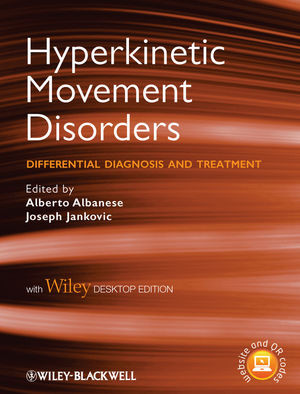

Most ebook files are in PDF format, so you can easily read them using various software such as Foxit Reader or directly on the Google Chrome browser.
Some ebook files are released by publishers in other formats such as .awz, .mobi, .epub, .fb2, etc. You may need to install specific software to read these formats on mobile/PC, such as Calibre.
Please read the tutorial at this link: https://ebookbell.com/faq
We offer FREE conversion to the popular formats you request; however, this may take some time. Therefore, right after payment, please email us, and we will try to provide the service as quickly as possible.
For some exceptional file formats or broken links (if any), please refrain from opening any disputes. Instead, email us first, and we will try to assist within a maximum of 6 hours.
EbookBell Team

4.8
104 reviewsHyperkinetic Movement Disorders provides a clinical pathway for effective diagnosis and management of these disorders. The stellar international cast of authors distils the evidence so you can apply it into your practice. The judicious use of
Provides a robust framework for clear patient management. Throughout the text, QR codes* provide smartphone access to case-study videos of hyperkinetic symptoms.
Purchase includes an enhanced Wiley Desktop Edition.* This is an interactive digital version featuring:
Hyperkinetic Movement Disorders provides you with the essential visual and practical tools you need to effectively diagnose and treat your patients.
*Full instructions for using QR codes and for downloading your digital Wiley DeskTop Edition are inside the book.Content:
Chapter 1 Distinguishing Clinical Features of Hyperkinetic Disorders (pages 1–14): Alberto Albanese and Joseph Jankovic
Chapter 2 Pathophysiology and Molecular Pathology of Dystonia and Tics (pages 15–25): Marie Vidailhet, Michael Schupbach and David Grabli
Chapter 3 Pathophysiology and Molecular Pathology of Tremor, Myoclonus, and Chorea (pages 26–39): Johannes D. Speelman, Elisabeth M. Foncke, Anne?Fleur van Rootselaar and Marina A. Tijssen
Chapter 4 Overview of the Medical Treatments of Hyperkinetic Disorders (pages 40–48): William Ondo
Chapter 5 Overview of Surgical Treatment Possibilities in Hyperkinetic Disorders (pages 49–69): Vinata Vedam?Mai, Oscar Bernal and Michael S. Okun
Chapter 6 Essential Tremor (pages 71–94): Julian Benito?Leon and Elan D. Louis
Chapter 7 Other Tremors (pages 95–111): Claustre Pont?Sunyer, Eduardo Tolosa and Judith Navarro?Otano
Chapter 8 Primary Dystonias (pages 113–134): Antonio E. Elia and Alberto Albanese
Chapter 9 Secondary Dystonias (pages 135–145): Susanne A. Schneider
Chapter 10 Huntington Disease and Other Genetic Choreas (pages 147–174): Ainhi Ha and Joseph Jankovic
Chapter 11 Acquired Choreas (pages 175–187): Ruth H. Walker
Chapter 12 Tics and Tourette Syndrome (pages 188–199): Joseph Jankovic
Chapter 13 Secondary Tics (pages 200–205): Francisco Cardoso
Chapter 14 Inherited Myoclonus Syndromes (pages 207–220): Emmanuel Roze and Emmanuelle Apartis
Chapter 15 Segmental Myoclonus (pages 221–235): John Nathaniel Caviness
Chapter 16 Other Jerks and Startles (pages 236–256): Codrin Lungu and Mark Hallett
Chapter 17 Clinical and Pathophysiological Features of Cerebellar Dysfunction (pages 257–278): Giuliana Grimaldi and Mario Manto
Chapter 18 Inherited and Sporadic Ataxias (pages 279–295): Helio A. G. Teive, Renato P. Munhoz and Tetsuo Ashizawa
Chapter 19 Dyskinesias in Parkinsonian Syndromes (pages 297–310): S. Elizabeth Zauber and Christopher G. Goetz
Chapter 20 Restless Legs Syndrome (pages 311–330): Pamela Hamilton?Stubbs and Arthur S. Walters
Chapter 21 Tardive Dyskinesias (pages 331–352): Gonzalo J. Revuelta, Leslie Cloud, Pratibha G. Aia and Stewart A. Factor
Chapter 22 Stereotypies and Other Developmental Hyperkinesias (pages 353–362): Jayasri Srinivasan and Jonathan W. Mink
Chapter 23 Paroxysmal Dyskinesias (pages 363–374): Miryam Carecchio, Joao Massano and Kailash P. Bhatia
Chapter 24 Psychogenic Movement Disorders (pages 375–384): Stanley Fahn